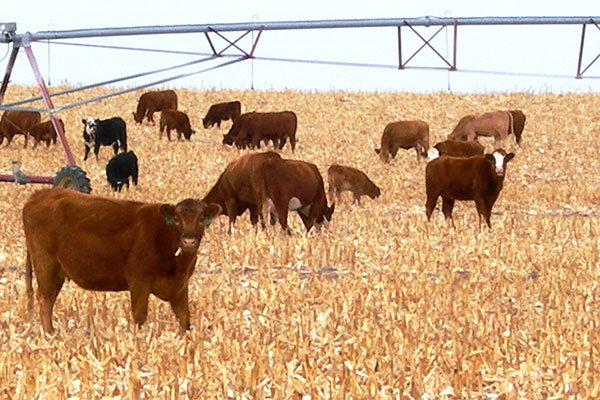Integrated Crop-Livestock Systems For Sustainable Agriculture

Hello there! Today, I wanted to talk about something that has been gaining a lot of attention in the agriculture world: Integrated Crop-Livestock Systems. These systems are a fascinating approach to farming that combines the benefits of both crop production and livestock farming. It's a win-win situation for farmers and the environment alike. So, let's dive deeper into the world of Integrated Crop-Livestock Systems and explore what makes them so special.
But before we begin, let me give you a brief overview of what Integrated Crop-Livestock Systems are all about. In a nutshell, these systems involve the integration of crop production with livestock farming on the same piece of land. This integration allows for a more sustainable and efficient use of resources, resulting in improved productivity and profitability for farmers.
Now, let's explore some ideas for implementing Integrated Crop-Livestock Systems on your farm. One popular approach is to rotate crops and livestock on the same piece of land. This rotation helps break the cycle of pests and diseases that can harm crops, while also providing nutrients to the soil through livestock waste. It's a great way to naturally improve soil fertility and reduce the need for synthetic fertilizers.
Another idea is to establish silvopasture systems, which involve planting trees or shrubs alongside pastures where livestock graze. These systems provide shade for animals, reduce soil erosion, and offer additional forage options. Plus, the trees can also serve as a potential source of timber or fruits, adding an extra income stream for farmers.
When it comes to recommendations for implementing Integrated Crop-Livestock Systems, there are a few key factors to consider. Firstly, it's essential to carefully plan the integration of crops and livestock, taking into account factors such as the nutritional needs of animals and the compatibility of different crop species. This planning stage is crucial to ensure a successful and harmonious integration.
Moreover, it's important to adopt sustainable practices within these systems. This means focusing on soil conservation, reducing chemical inputs, and promoting biodiversity. Implementing practices like cover cropping, no-till farming, and agroforestry can significantly contribute to the sustainability and resilience of Integrated Crop-Livestock Systems.
Now, let's talk about the benefits of Integrated Crop-Livestock Systems through a listicle format:
- Enhanced Resource Use Efficiency: By integrating crops and livestock, these systems optimize the use of available resources such as land, water, and nutrients.
- Natural Soil Fertility Improvement: The integration of livestock waste and crop residues improves soil quality and reduces the need for synthetic fertilizers.
- Diversified Income Sources: Integrated systems provide multiple income streams through both crop and livestock production, increasing farmers' resilience to market fluctuations.
- Reduced Environmental Footprint: By promoting sustainable practices, Integrated Crop-Livestock Systems help minimize soil erosion, water pollution, and greenhouse gas emissions.
- Enhanced Animal Welfare: Animals benefit from a more diverse diet, access to shade and shelter, and reduced stress levels through the integration of trees and pastures.
Now, let's move on to answering some common questions related to Integrated Crop-Livestock Systems:
Q: What are the challenges of implementing these systems?
A: Implementing Integrated Crop-Livestock Systems can come with certain challenges, such as the need for additional knowledge and skills, increased labor requirements, and potential conflicts between crop and livestock management practices. However, with proper planning and support, these challenges can be overcome.
Q: Are these systems economically viable?
A: Yes, Integrated Crop-Livestock Systems can be economically viable. They offer improved productivity, reduced input costs, and diversified income streams, which can contribute to higher profitability for farmers in the long run.
Q: Do these systems require a specific scale of operations?
A: Integrated Crop-Livestock Systems can be implemented on various scales, from small family farms to large commercial operations. The scalability of these systems allows for adaptation to different farming contexts and goals.
In summary, Integrated Crop-Livestock Systems are an innovative and sustainable approach to farming. By combining crop production and livestock farming, these systems offer numerous benefits, including enhanced resource use efficiency, improved soil fertility, diversified income sources, reduced environmental impact, and enhanced animal welfare. Implementing these systems may come with challenges, but with proper planning and support, they can be economically viable and adaptable to different scales of operations. So, why not explore the possibilities of Integrated Crop-Livestock Systems and embrace a more integrated and sustainable way of farming?




Post a Comment for "Integrated Crop-Livestock Systems For Sustainable Agriculture"